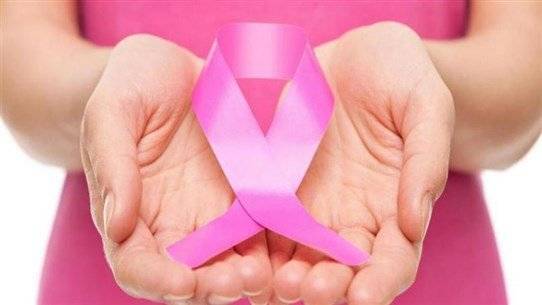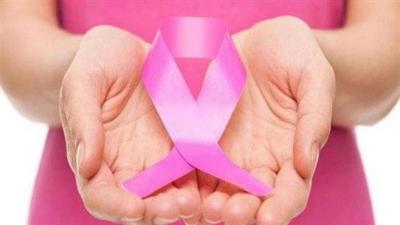The consequences of the economic crisis are "accounted for," says Dr. Naji Al-Saghir, director of the Breast Cancer Treatment Center at the Naef Basile Cancer Institute at the American University of Beirut. Today, the lack of financial capability translates into an increase in cases of cancer at advanced stages on one hand, and a recurrence of cancer in many women on the other. Although it is too early to discuss statistics that document these changes, this is what doctors observe in clinics.
**Increase in Advanced Cases**
Unlike the situation before the crisis, oncologists are noticing an increase in the number of women diagnosed with advanced stages of breast cancer. These increases did not occur without reason; they are due to the inability to perform early screenings because of their high costs on one hand, and the absence of the campaigns that women relied on to undergo tests and imaging at a nominal cost on the other hand. Today, the cost of early detection tests and imaging ranges "between $60 and $120," says Hani Nassar, president of the Barbara Nassar Association. This amount is converted into Lebanese pounds "daily at the exchange rate," and it does not fall below five million pounds, which is no longer affordable for many. This has led to a significant decline in the rate of early cancer detection, previously estimated to be "between 80% and 90% of women undergoing this test," according to Al-Saghir. This change means that "we now see in clinics women coming because they felt a lump." This indicates "that we are now facing advanced stages" and also necessitates treatment. Here lies the obstacle "in the availability of treatment and then accessing it," according to Al-Saghir. There is a difference between the two expressions, as availability of treatment "does not mean that many can access it due to costs."
**Postponement of Reconstruction Surgery**
Among the first of these costs is the surgical procedure, which varies in price from one place to another depending on the hospital's "grade" classification, as well as the costs of medical supplies, most of which are out of the support loop, being priced in US dollars. The situation does not stop at surgery; it also includes breast reconstruction, which impacts costs that range from $2,000 to $8,000 depending on the hospital. The cost of reconstruction is often estimated at half or sometimes more, due to the high price of supplies. As what is offered by insurance providers today barely covers the hospital stay expenses, the total costs of this phase have fallen entirely on the patient. This situation has led some women to make the extreme choice of postponing surgery, a trend that doctors notice today, says Al-Saghir. While this statistic has not yet taken on a severe dimension, there is a developing trend among many "to forgo breast reconstruction surgeries due to their high costs in terms of reconstruction equipment (prothesis) or the fees of plastic surgeons," Nassar adds.
**Medications: All Supported Drugs are Missing**
The treatment journey does not end with surgery; it is followed by other steps according to the disease's progression stages. Generally, surgery is followed by chemotherapy treatments that the patient undergoes in the hospital. The challenges of this phase do not stop at the exorbitant costs now counted in tens of millions of pounds per session, but also in the availability of these treatments, which raises the issue of support, as the availability of medications, including breast cancer treatments, depends on the hand of the Governor of Lebanon's Central Bank, Riad Salameh. Recently, this hand has not been open, leading to a significant shortage of medications in the market. Additionally, the random decisions to raise subsidies made by the Ministry of Public Health resulted in two main outcomes: first, the removal of subsidies from some essential drugs, leading to a spike in prices, and second, keeping subsidies on other drugs, resulting in their disappearance from the market. In both cases, medications are no longer accessible to patients.
For breast cancer medications, treatments are divided into two types: treatments administered in hospitals, about 15 in number, and home treatments, which consist of around 10 medications. It can be stated that approximately 80% of these medications are unavailable, as agreed by many doctors. For instance, the drug "gemzar," a chemotherapy treatment that has had its subsidy lifted, is now priced in the millions, reaching "10 million pounds," according to Nassar. Due to this cost, many can no longer afford it, nor its alternatives, "as the two substitutes that remained subsidized are absent from the market," Nassar explains. This applies to other treatments such as "taxor," "taxotere," "carboplatine," and "catcyla," which has been missing from the Ministry of Public Health for six months.
As for home treatments, mostly consisting of pills, these have largely become unavailable. Examples include "ibrance," "kiskali," "verzenio," and others. What is available barely suffices for patients, "either half or less than half comes," according to sources from the drug distribution center in Karantina.
The result? Many doctors adjust prescriptions, "we sometimes have to change the medication, which might be less effective, but we have no open options," says Al-Saghir. Patients resort to "rationing" their medications, "so instead of taking four pills a day, a patient takes two," or very often importing medicine from abroad, which carries the risks of "potential counterfeit medications," according to Al-Saghir and Nassar.
There is a third category of treatments, which are hormonal therapies taken to prevent cancer recurrence. The situation for these treatments is similar, as they are either no longer subsidized or are supported yet missing. For instance, "arimidex," a drug that has had its subsidy lifted, has no available alternatives like "victev" and others. The same goes for "femara," whose price has increased, while remaining types like "lefftara" and "letrozol" are unavailable.
Due to this reality, Al-Saghir notes that the number of women who have experienced a recurrence of cancer has risen. Here lies the fear, as the lack of treatments either leads to the spread of the disease, reducing the chance of survival, or shortens years of survival, or leads to the cancer returning. Is there still any doubt that what is happening is not a form of mass extermination?




